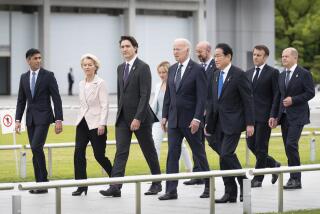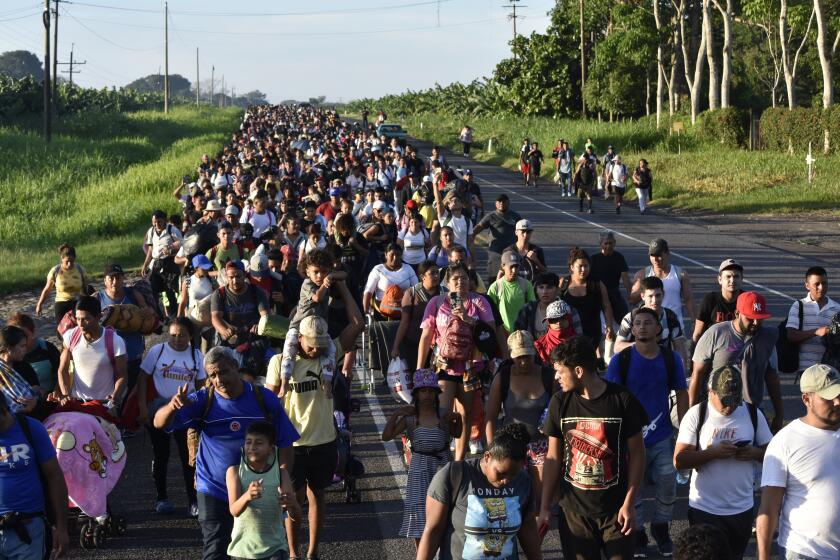Why Revive an Inhuman Program?
Growers and their advocates in Congress are drafting a new guest-worker program that would allow hundreds of thousands of Mexican farm workers into the country, despite double-digit unemployment in most agricultural communities. Bob L. Vice, former California Farm Bureau Federation chief, recently told a California newspaper that he and others are working to revive a farm-labor bill defeated last year. A generation after the demise of the infamous bracero program, growers must be counting on the country’s short collective memory. Responsible policy demands that that memory be refreshed.
On Sept. 29, 1942, 500 farm workers from Mexico arrived in Stockton, Calif. Transported by the U.S. government and delivered to state growers, the farm workers were the first installment of a wartime emergency program designed to fill the declared labor shortage in agriculture. Over the next 22 years, 5 million braceros were contracted to growers and ranchers throughout the Western United States.
The term “bracero” comes from the Spanish word for arm, and can be loosely translated as “farmhand.” Its literal meaning, “arm-man,” hints at the job the braceros were to do in the agricultural economy: supplying a pair of arms and imposing few obligations on the host society as human beings.
Despite the considerable advantages to growers of cheap bracero labor, abuses soon surfaced. For one thing, the use of temporary workers lacking in political and legal standing to negotiate contracts or labor conditions violated the fundamental tenets of a liberal democratic society. More concretely, the bracero program became synonymous with substandard wages and living conditions. Although guarantees regarding wages, duration of employment, housing, health insurance and other specifics were written into bracero contracts, these protections were poorly enforced and routinely circumvented.
Also well-documented was the downward pressure on local farm workers’ wages. Although bracero contracts required employers to pay “prevailing wages,” and growers had to demonstrate that a shortage of labor existed before being certified to contract braceros, study after study found that in regions where braceros were concentrated, workers’ bargaining power declined and wages were depressed. It is not difficult to understand why.
The bracero program effectively short-circuited the laws of supply and demand in the labor market. The “prevailing wage” came to mean “the wage that prevails” in a noncompetitive labor market. By 1960, conditions were so bad that when CBS aired the widely acclaimed documentary “Harvest of Shame,” which depicted the poverty and despair of migrant farm workers in the United States, a deluge of mail from an outraged public swamped the network and Congress, contributing to the bracero program’s demise. By the time the program ended in 1964, not only had it driven down already meager farm-worker wages and eroded working conditions, but it had increased illegal immigration as well.
The bracero program’s demise was so scandalous that it took more than 20 years for growers and their supporters in Congress to work up their political nerve to try to resuscitate it. When Sen. Alan K. Simpson was shepherding immigration reform through the 1985 Congress, then-Sen. Pete Wilson, responding to pressure from the Western Growers’ Assn., introducing an amendment to import 350,000 farm workers annually. Likening it to the old bracero program, Simpson ridiculed the idea as “exploitation deluxe”; House Democrats called it a “de facto slave-labor program.” The amendment was defeated.
Now growers are trying again. The General Accounting Office recently documented a surplus of agricultural labor in the United States; unemployment among farm workers is far higher than the national average; more than 60% of farm workers live below the poverty line; and wages in agriculture have declined over the last decade. Citing these conditions and the abuses of the past, the U.S. Commission on Immigration Reform concluded in 1997 that importing additional farm workers would be “a grievous mistake.”
Growers are couching their latest demands in terms of stepped-up efforts by the Immigration and Naturalization Service to control illegal immigration. They contend Operation Gatekeeper and enforcing employer sanctions will deprive them of their work force. Thus, they must be provided with an alternative labor supply. This line of reasoning has a number of problems.
First, employer sanctions have been on the books since 1987 and have had no effect on either illegal immigration nor the supply of farm workers. It is notoriously difficult to enforce employer sanctions in agriculture, and growers know that the INS has virtually abandoned the cause. Neither has Operation Gatekeeper had any appreciable effect on the labor supply, in part because there are other routes to entry into the United States and in part because such border control has the ironic effect of keeping migrants in the United States once here.
Second, there already exists an alternative to hiring the undocumented: the H-2A program. Part of the Immigration Reform and Control Act of 1986, the H-2A program allows for the import of farm workers once it has been certified that a shortage exists and includes some minimal labor protections and a housing provision. But the program is rarely used, attesting to the plentiful supply of farm workers willing to (or more precisely, having to) work under more “flexible” conditions.
Finally, a cursory look at the proposal growers are advancing exposes their motives. The amendment put forward and defeated last year, and about to be reintroduced this year, includes none of the protections of the old bracero program. It would bring in upward of 350,000 farm workers annually, require no determination that a labor shortage exists, contain no housing requirement and include no guarantees of employment to the imported workers.
One observer characterized the old bracero program this way: “For the growers the program was a dream of heaven: a seemingly endless army of cheap, unorganized workers brought to their doorstep by the government.” But growers’ greed should not drive social policy, because such large-scale temporary-worker programs increase undocumented immigration, undermine the laws of supply and demand and throw more workers into poverty. The bracero program was a bad idea the first time around; it remains a bad idea.*
More to Read
Sign up for Essential California
The most important California stories and recommendations in your inbox every morning.
You may occasionally receive promotional content from the Los Angeles Times.






